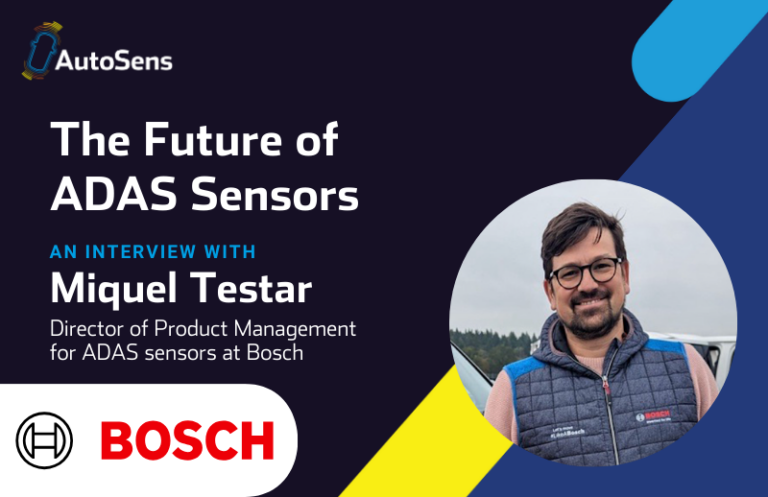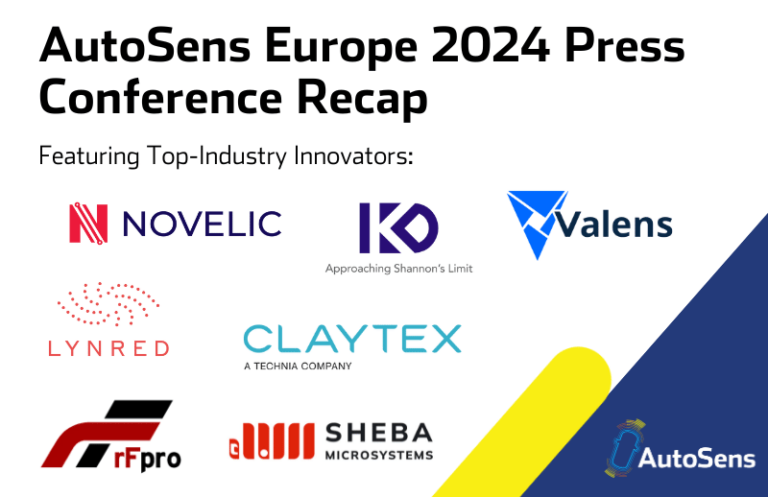We caught up with STMicro ahead of AutoSens in Brussels. They shared with us more information on their new position processing chips and the need to get the media and school children involved in the current ADAS skills shortage. STMicro will be exhibiting at AutoSens Brussels this September.
How are you involved with IEEE SA P2020?
STMicro is an active member of the IEEE-SA P2020 “LED Flicker” working group. This group aims to define the flicker metrics like the CMS flicker test and the methodology. This important subject for the Automotive Camera Systems is perfectly aligned with our own strategy to propose innovative LED Flicker-Free imagers combined with a very high dynamic range.
Your focus recently has been on eliminating flicker, is that caused by LED lighting or is it sensor-based?
The LED flicker is a well-known issue in the Automotive market. Indeed, this phenomena is caused by both the light source and the sensor temporal sampling. The light sources on the road, with PWM-Modulated LEDs, have NO standard frequency and NO phase coherence between them. A traditional HDR sensor with two or three exposure times can miss the LED light pulse by trying to capture a signal with an higher frequency than the sampling rate. This is especially true under daylight conditions as the Long integration time will saturate and the Medium/Short integration times will be too short to catch the LED light signal. The consequences for the driver are multiple : from irritation and distraction with the flicker seen on the car display to a collision and car crash with a camera wrong decision due to missing information.
Your new position processing chips sound really exciting, what can you reveal about those?
Our new Image Signal Processor chip, named STV0971, is a standalone low-power versatile ISP for automotive ADAS applications where cost efficiency matters. It targets every automotive display application, like surround views, rear views, e-mirrors, and general purpose cameras. It also enhances any machine vision applications like front facing or driver monitoring use cases by supporting dedicated color spaces. This ISP benefits from the state-of-the-art in-house processing algorithms, like defective pixel repairing, HDR merging, global tone mapping, adaptive colorization, adaptive lens shading correction, auto white balance, de-noising, and sharpening enhancement .
Is positioning a new area for STMicro, and how do you see that working alongside your existing automotive products?
Our strategy consists in proposing innovative products for mid-end to high-end market segments like E-Mirror applications. With our last generation of CMOS sensor, we fulfill all the KPIs of the new but promising E-Mirror systems. At the same time, we are already defining the next generation of camera system, based on newly developed technology bricks.
How do you manage innovation of new products and ideas, is it always customer-led?
We are of course very attentive to the market needs, and listen to Tiers, OEMs, and various ecosystem partners. Then, innovation is always a mix of incremental and disruptive paths, and being involved in both consumer and automotive markets allow us to cross-fertilize each of our product line-ups with technology enablers coming from different requirements.
How do you feel industry can help resolve the shortage in skilled ADAS technologists?
We think there is a general turn away from the uncool real hard world of Engineering. Writing software makes you a billionaire in a few years (Facebook etc). That can be encountered by better media coverage of the exciting parts of technology to the youth, YouTube is an excellent channel that should be used more often. Inviting school kids to experiment with engineering challenges, robots, IoT networking, neural networks, autonomous vehicles etc. is actually gaining more traction. That should be done more often. We’d love to see pupils at AutoSens shows, showcasing their student projects.
What’s the most exciting technology change in industry you expect to see in 2018?
Nothing we are not aware of. Existing trends will go on. Machine learning by Neural networks will creep into more and more areas of what we do.
What are you most looking forward to at AutoSens in 2018?
The development of new applications like the in-cabin ones, including driver monitoring. During AutoSens Brussels conference, STMicro will show a demo of driver monitoring, based on a family of new automotive imaging sensor, especially specified for in-cabin, with high performances including under Near-IR lighting. This new product family is disruptive both thanks to the unique pixel but also the features, well-fitting with such computer vision application.
Excluding your own, which technology or application are you most looking forward to learning about
The rising of new interactions inside the car, with the usage of Near-IR camera.
Come along to AutoSens in Brussels and meet STMicro at the world-famous AutoWorld museum. Book your tickets here >>






